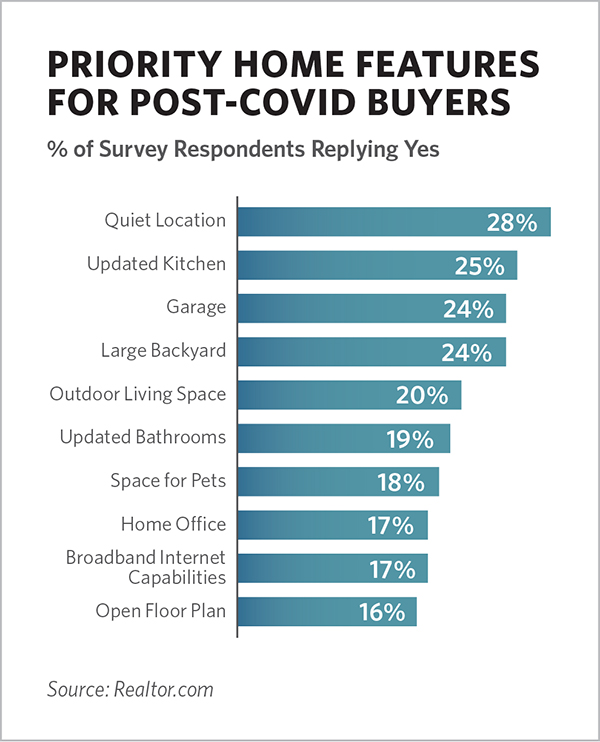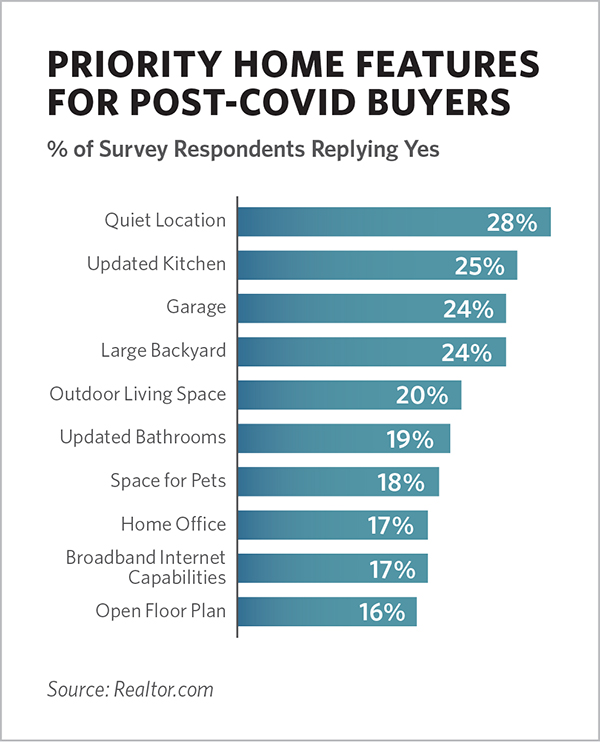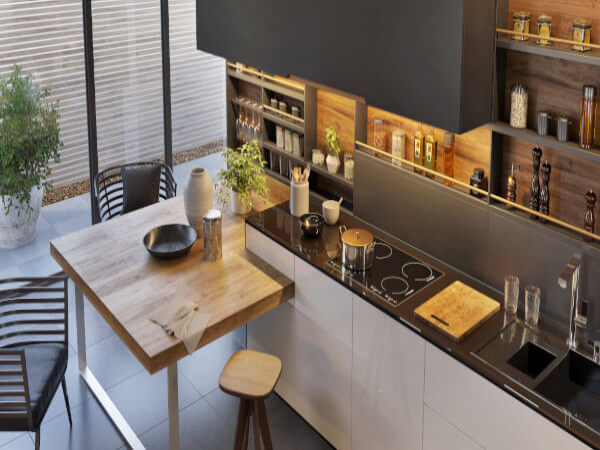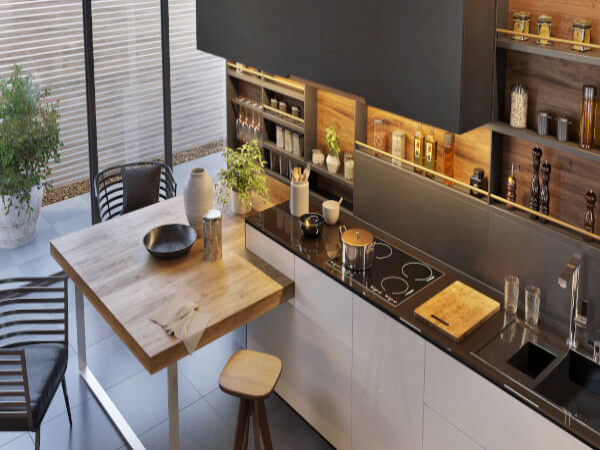While the past 15 months have certainly taken a toll on all of us, we can now look ahead to a brighter future. The power of positive thinking helped many people escape the darkness a global pandemic can evoke. It can also help us see the silver lining in what we’ve been through.
How can we adapt? How can we operate our businesses more efficiently? How do we connect with people?
Now that we’ve been through the worst of the COVID-19 public-health crisis, many of us can hit the reset button and get a fresh perspective on best business practices as we enter a new era. Our small family business not only survived but began to thrive as the pandemic progressed. How? It most definitely was not easy. Part of our success is attributed to our unique corporate structure: a service and retail business comprised of a full-service plumbing company and a decorative hardware showroom. But there is more to it than simply that. What follows is what we learned amidst our struggles as we enter a post-COVID Era.
Still a ‘People’ Business
Decorative plumbing and hardware is unique in that it remains a “people” business. Artificial Intelligence and technology may be replacing jobs in other industries, but ours still requires people. There are just too many unpredictable factors and variables that come into play when we’re dealing with a new construction or a remodel project that cannot be solved by an algorithm. As we all know, these types of projects are emotional and, as a result, each one requires a unique human connection.
What has evolved is the way that we connect with people. On The DPHA Drip podcast (Episode: The Consolidation Effect), I had an enlightening conversation with Vik Szemerei, director of strategic accounts at The House of Rohl. One of the biggest takeaways from the conversation involved talking about how the pandemic has forced us to think about how we connect with people and how we operate more efficiently due to the increased value of time.
We both agreed that it makes absolutely no sense to fly across the country to sit in the room with people for a PowerPoint presentation. Save the PowerPoint or strategic talking points for a virtual meeting. When you are meeting with someone, use that time to connect, get to know each other and communicate. So, while our industry is still largely a people business, we can effectively utilize new technology to do better business with people, not to replace people.
Rethinking Events & Showcases
There seemed to be a saturation of events and showcases before the pandemic – so much so that it almost seemed like burnout was inevitable.
Those planning the events and showcases were struggling to figure out how to remain relevant amongst their competition, while those attending were struggling with which events would be worth the investment to attend. This would often lead to disappointment from exhibitors due to low attendance and thus less engagement from attendees because of the low energy.
DPHA adapted by hosting a virtual conference in 2020 and expanding its outreach to a new sector of attendees. Through our relationship with ASID, NKBA and other relevant associations, we extended invitations to architects and designers across North America, yielding hundreds in attendance. Moving forward, DPHA is implementing new strategies to make our annual showcase more accessible by doing the following:
Offering a Hybrid Model: the showcase can be attended virtually or in-person.
Being more design centric: ASID will have their own booth at the conference this year, and several design centric breakout sessions will take place.
Educational Sessions will be available in-person or as part of the virtual event.
The pandemic has forced us to rethink the way we connect with people, which has also forced companies to rethink the way they allocate their market and related budgets.
Company Roles & Structure
Efficiency and adaptation have been common themes, so it is natural for this concept to be fluid in all aspects of business. Companies both large and small have regrouped to think of ways to be more lean, agile and receptive to growth and change.
Technology can also be utilized to improve processes in different areas of your business. For example, our service department switched to a “remote dispatch” model to avoid close contact with one another when public health was uncertain. What we realized in that adaptation was that it increased the efficiency of our technicians’ ability to complete their projects more effectively and expanded our network radius. We can hire technicians out of our service area to reach more potential customers and eliminate the detriment of a commute.
If your bookkeeper, accountant or administrator does not have to be in the office, your hiring pool can expand tremendously. Showroom design consultants could be more accessible and make a greater impact outside of the showroom. Technology and innovation have been critical catalysts for improving processes, increasing productivity and maximizing accessibility.
A New Era
We are all in a unique position to reinvent ourselves in business and as individuals. The loss of human connection will hopefully inspire us to live with more gratitude.
Technology and innovation have helped us discover our potential in business. We now have the opportunity to create a unique new synergy by using technology to make us more connected instead of creating more distance. Businesses can utilize technology to maximize efficiency while placing more emphasis on connecting with the people they do business with. Events and showcases can expand their network while keeping the family culture alive.
With all of these advancements and new insights, we can all move forward together with hope in this post-COVID Era. 
J. Philip Hotarek is operations manager at Lutz Plumbing Inc. and currently serves as board secretary for the Decorative Plumbing & Hardware Association (DPHA). A former NCAA and professional ice hockey player, he spent summers working in the family business as a plumbing apprentice and has been working full time for the company for the past 10 years as a design consultant and plumbing technician. He is currently stepping into a management and ownership role for Lutz Plumbing Inc., whose decorative hardware showroom serves the San Francisco Bay Area.
The post Adapting to the Post-COVID Era appeared first on Kitchen & Bath Design News.
Did you miss our previous article…
https://www.denniskitchens.net/?p=595


 When asked which home features have become a priority as a result of the pandemic, a quiet location (28%), an updated kitchen (25%) and garage and large backyard (24% each) topped the list. Outdoor living area (20%), space for pets (18%), updated bathrooms (19%), home office and broadband internet capabilities (17% each) and open floor plan (16%) rounded out the top 10 pandemic-induced most desired home features (see graph, left).
When asked which home features have become a priority as a result of the pandemic, a quiet location (28%), an updated kitchen (25%) and garage and large backyard (24% each) topped the list. Outdoor living area (20%), space for pets (18%), updated bathrooms (19%), home office and broadband internet capabilities (17% each) and open floor plan (16%) rounded out the top 10 pandemic-induced most desired home features (see graph, left).

